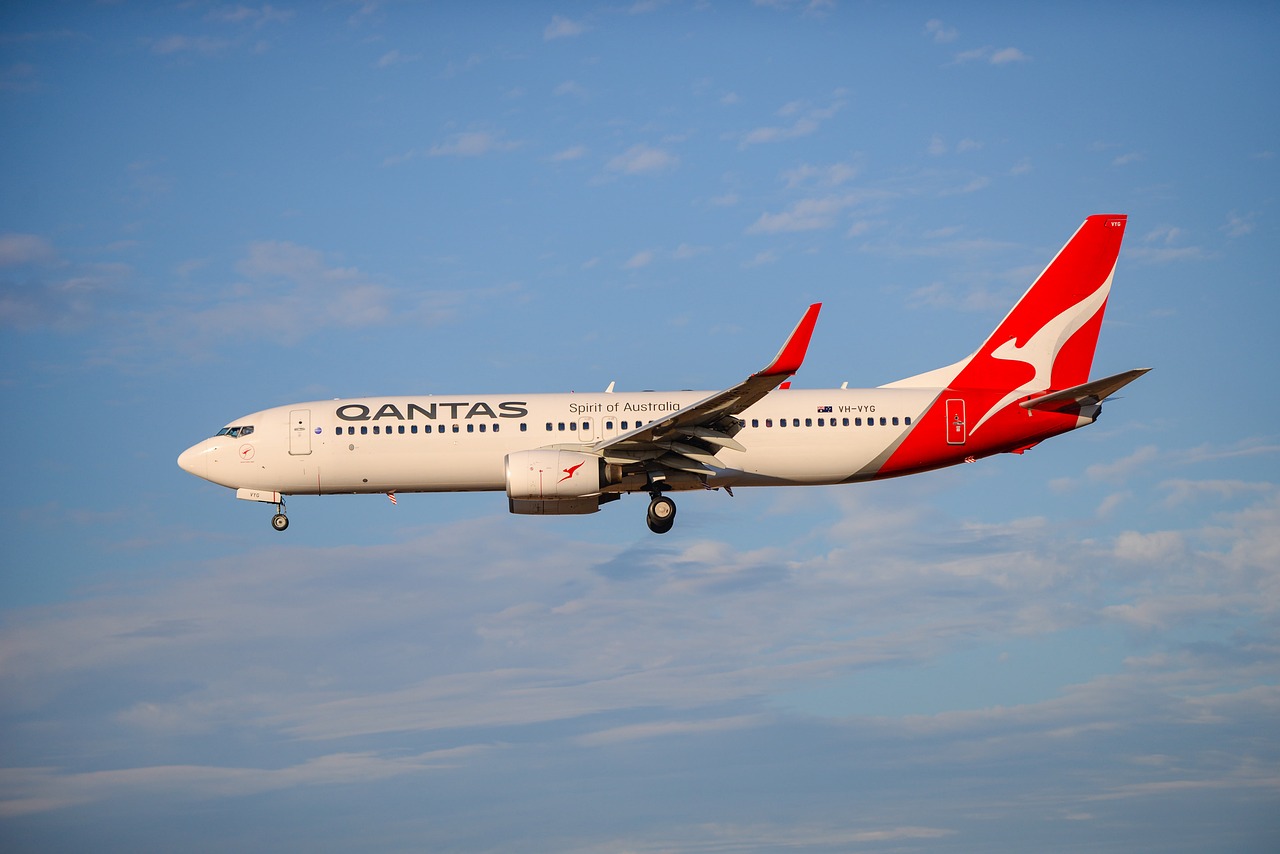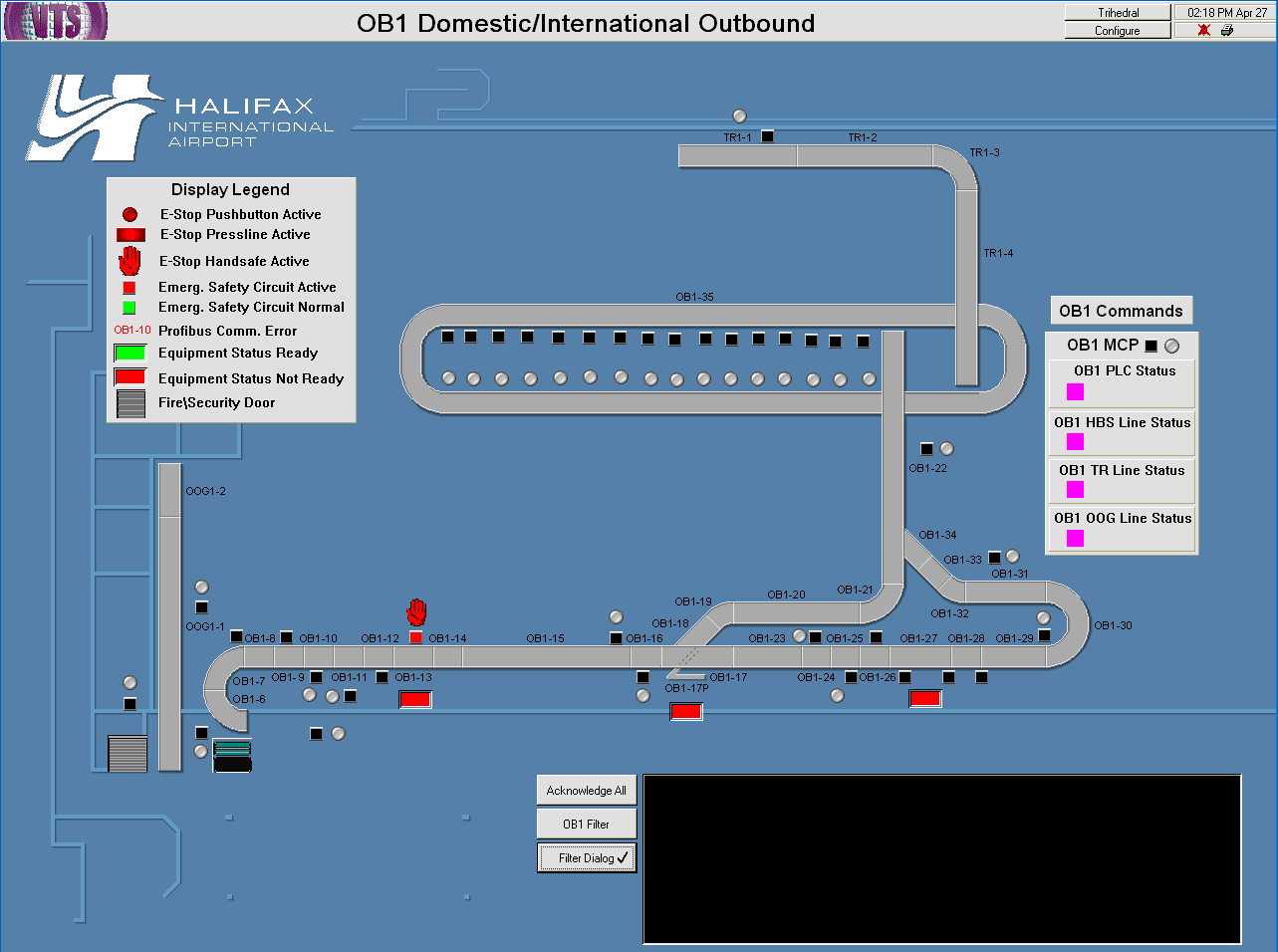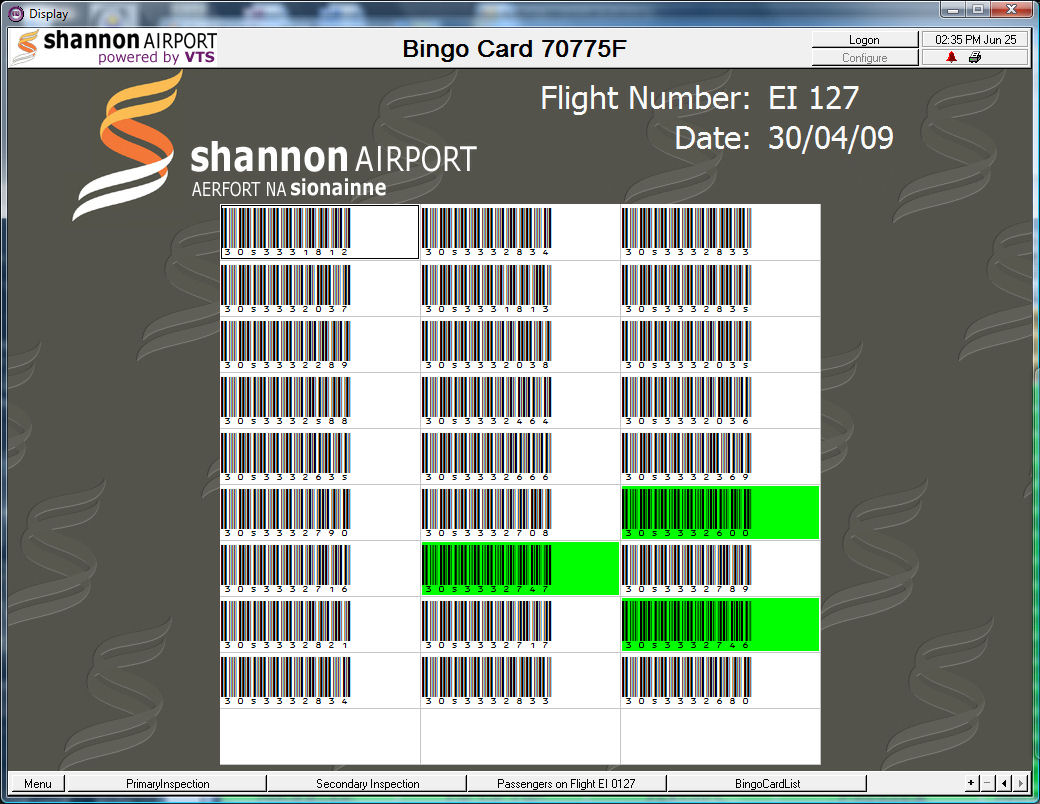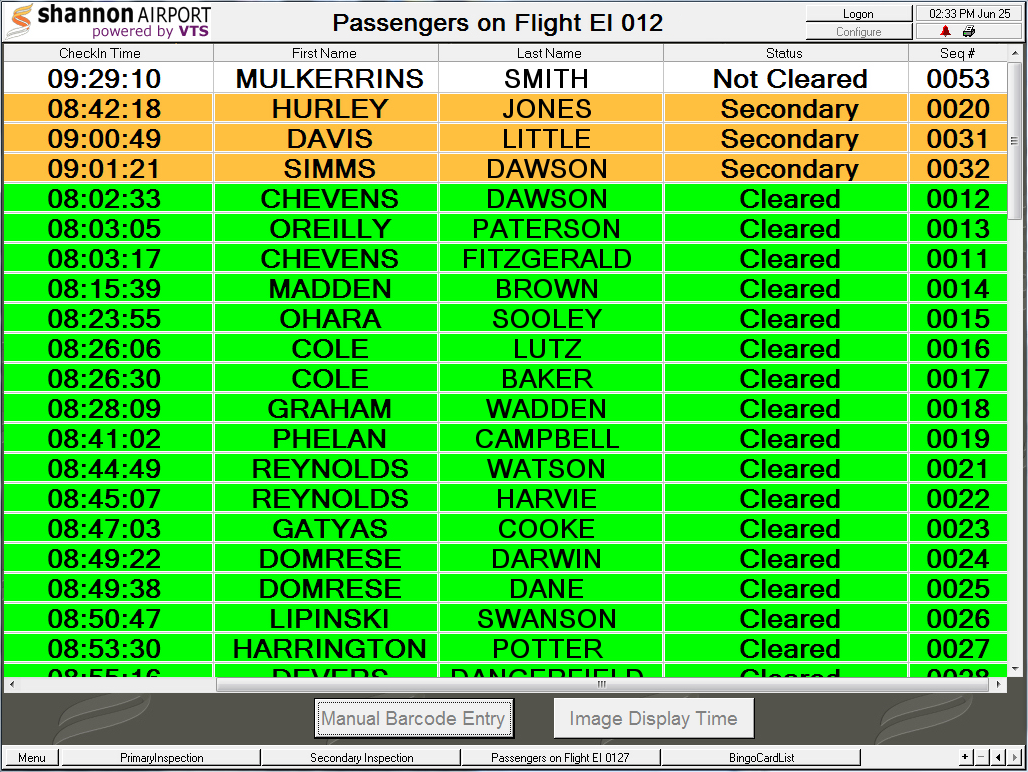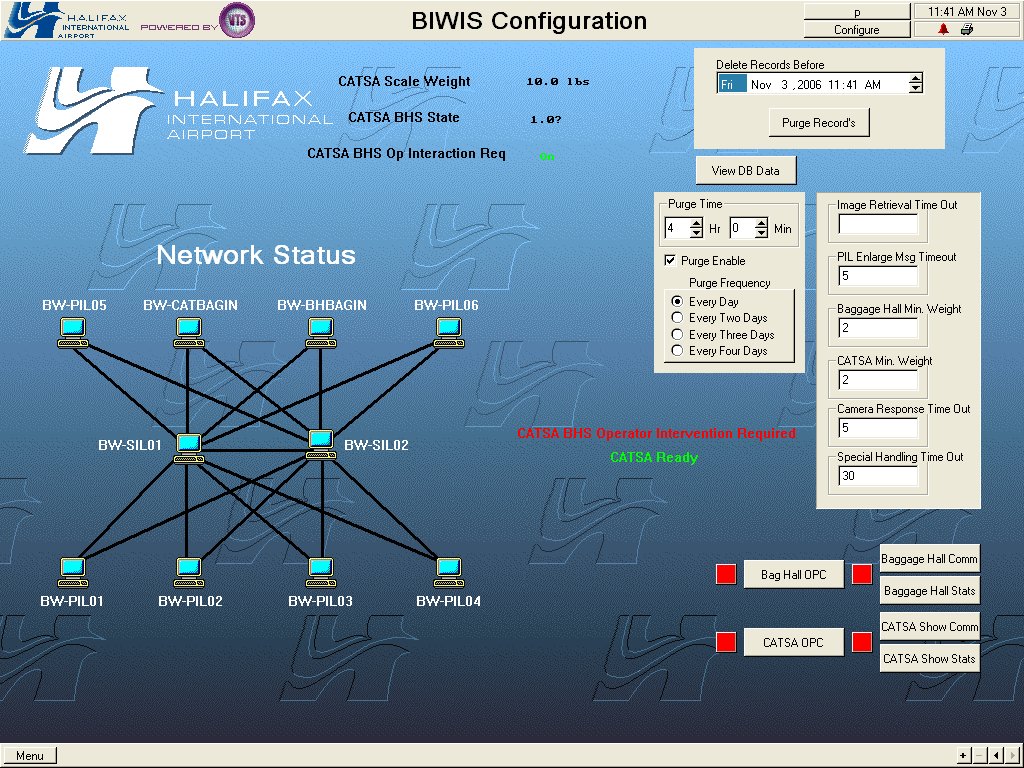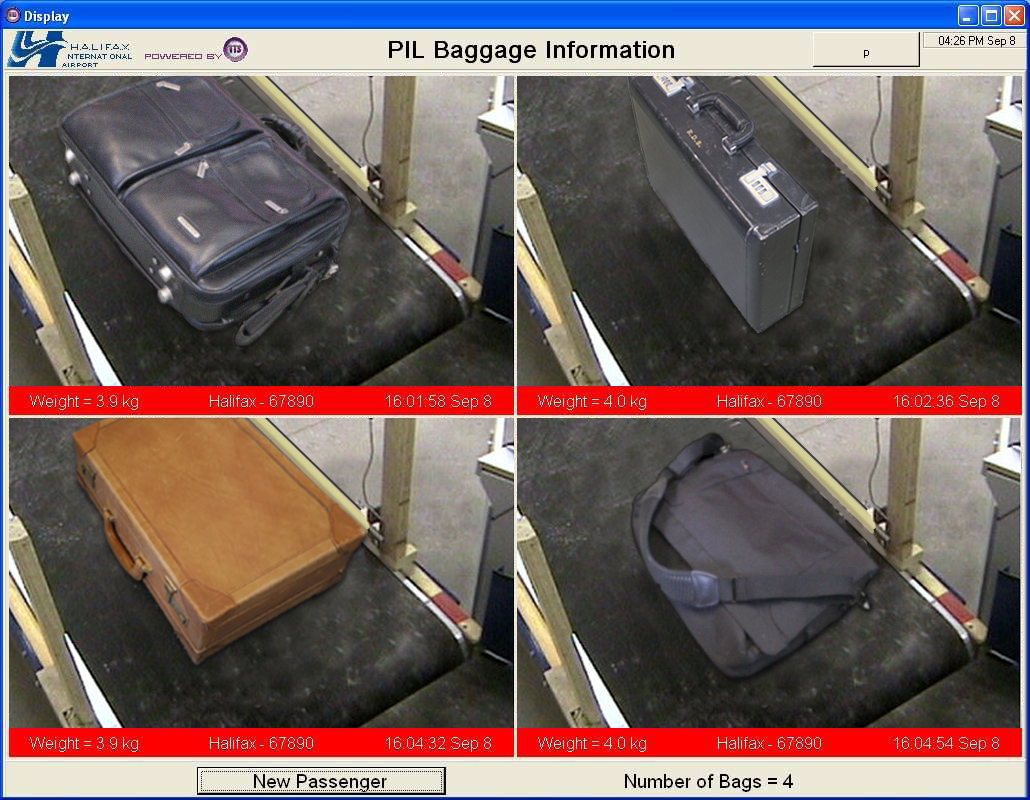This is an overview of Trihedral’s airport solutions developed using VTScada, their commercially available off-the-shelf (COTS) monitoring and control software.
- Baggage Image Weight Identification (BIWIS)
- Air Traffic Control – Navigational Aid Monitoring
- Baggage Handling System Monitoring
BIWIS Systems

Trihedral’s Baggage Image Weight Identification System (BIWIS) is used by US Customs and Border Protection (USCBP) officials at pre-clearance facilities at foreign airports to help make informed decisions about airline passengers entering the United States.
The system includes direct high-speed interfaces to security cameras and weight scales that collect baggage information of passengers traveling through the airport on their way to US destinations. It displays summarized information for US agents at primary inspection points to help them determine which passengers are candidates for secondary inspections.
Reliable System Architecture
Like all VTScada-based applications, this system supports full-system redundancy, automatic failover, and online configuration. The open architecture of VTScada also allows for seamless integration with baggage conveyance control systems.
Highly-Scalable Architecture
Systems have been designed with as few as two client interfaces and as many as 60. The architecture upon which these systems rely can be easily expanded to support direct interfaces with baggage handling systems and other airport data management systems.
USCBP Acceptance
The VTScada BIWIS system was accepted for use by US customs agents after demonstrating compliance with the stringent performance and privacy standards set out by U.S. Customs and Border Protection. The end result is increased security and a smoother and more efficient traveling experience for passengers.
Passenger Privacy
The system erases baggage data automatically according to a set schedule. Configuration changes can only be made by authorized system administrators with valid user accounts and passwords.
Air Traffic Control SCADA Systems
This nationwide Air Traffic Control Instrumentation monitoring and control application includes:
- Six regional VTScada applications located across Canada.
- A technical training application center.
- A centralized configuration admin application.
- A centralized data collections and storage application, located at their National office.
- Regional Operations Center
- The regional systems interface with Staticraft ILS and runway lighting systems, radar systems, UPS and genset controllers, Monco runway glidepath and guidance systems, and Marconi VOR systems. These regional interfaces are primarily used for health and alarm management rather than control. In addition to displaying system alarms, alarms are disseminated via their internal paging system.
Reliable System Architecture
All applications are autonomous but maintain connectivity for data transfer. Each regional system consists of two redundant application servers, two I/O servers and three workstations. Network availability and traffic are monitored using the VTScada SNMP driver.
Time-Saving Templates
To maintain consistency across all of these applications, each of the systems is built upon a standardized software toolset layer, including customized communications drivers, graphics, functions and other elements. This toolset is maintained and expanded by Trihedral. Updates are sent to the end user for testing and deployment across its regional centers.
Maximo Support
The Air Traffic Control SCADA system integrates with their national Maximo installation, initiating work order requests via Web Services. VTScada stores corresponding work order numbers, which are used by operational staff to launch the Maximo client interface.
Application In Focus: Airservices Australia
Airservices Australia is a government-owned corporation serving the needs of the aviation industry within the Australian Flight Information Region (FIR). Their responsibilities include air traffic control, airway navigation, communication facilities, publishing aeronautical data, airport rescue, and fire-fighting services.
As part of their comprehensive monitoring and control strategy, Airservices Australia operates a Supervisory Control and Data Acquisition (SCADA) System, based on VTScada by Trihedral. In addition to gathering data from site- based Remote Telemetry Units (RTUs), monitoring subsystems and high-level interfaces, the system manages over 16,000 alarm points across 200 facilities.
It monitors the status of critical air navigation, surveillance, communications, and infrastructure equipment, including navigation aids, radios, communication links, generators, fuel levels, power supplies, and electrical systems. Additionally, VTScada is responsible for critical building services such as air-conditioners, temperature and intruder alarms, and radar data processing servers.
VTScada is proud to play a crucial role in assisting Airservices Australia’s Air Traffic Controllers to ensure the safe, reliable, and efficient operation all aircraft operating in 11% of the world’s airspace.
Baggage Handling System Management
Halifax, Nova Scotia, CanadaTrihedral developed and installed a centralized Baggage Handling System for the Halifax International Airport Authority, providing monitoring of the airport’s domestic and international baggage handling systems. The system includes fully redundant server/client computer architecture with data storage to ODBC-compliant databases for external reporting software access. Networked clients utilize the VTScada Internet Client, which is a full-functional ActiveX control available as part of the VTScada software suite.
Hardware Communication
The system monitors 1600+ values from conveyor, diverter/pusher, fire and security door, and X-ray equipment. PLCs communications are via Siemens S7-400 series and Allen Bradley 5 series and SLC series PLCs. All control device connectivity was made redundant by converting serial PLC connectivity to Ethernet.
Baggage Handling System HMI Displays
The application is configured to display various components of the system on 17 display screens. Screens are arranged in menus with sub-trees for clarity. Additionally, buttons along the lower section of the screen provide single-click access to frequently used screens.
Alarm and Event Management
Alarms and events are automatically colour coded to match predefined levels of priority (i.e. red = critical alarm, orange = high alarm). The colour of each alarm/event is recorded in an alarm/event history list. A dynamically updated alarm list is placed at the bottom of all screens. Additionally, a full screen alarms list allows filtering by priority, sorting by time or area (i.e. sub-system), acknowledging, silencing, muting and printing of alarms.
Report Generation
Authorized users can use the VTScada Reports Page to generate reports of alarms and event lists. They can also print screen shots from any SCADA server or Internet client computer running the application.
System Security
VTScada used a unified security system across all servers, clients, and Internet clients. Security is privilege based, allowing each user’s account to be ‘tuned’ to his/her specific needs. Security changes are network wide and immediate, extending to all clients and Intranet clients. Additionally, Intranet client activity can be monitored closely, allowing administrators to remotely disconnect users as necessary or to send messages to users, informing of planned network service interruption or pending disconnections. User profile data will be stored in VTScada’s encrypted security manager database.

